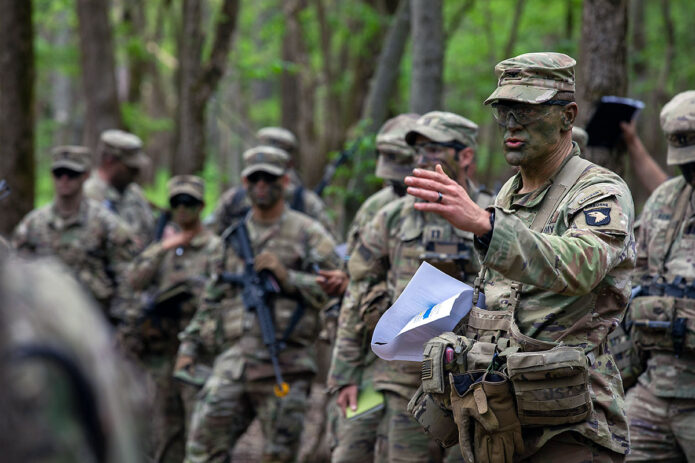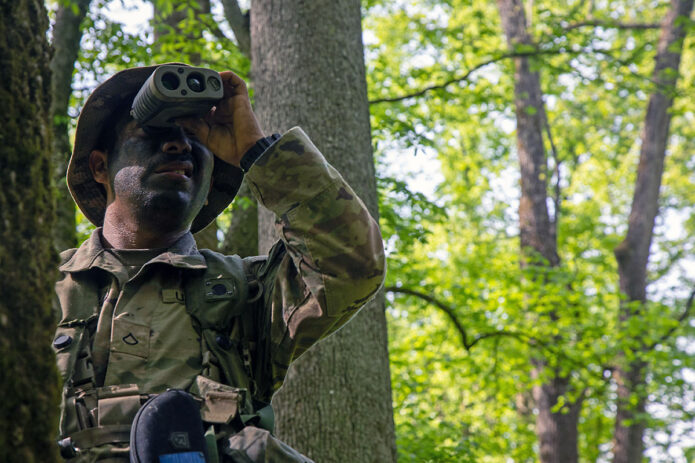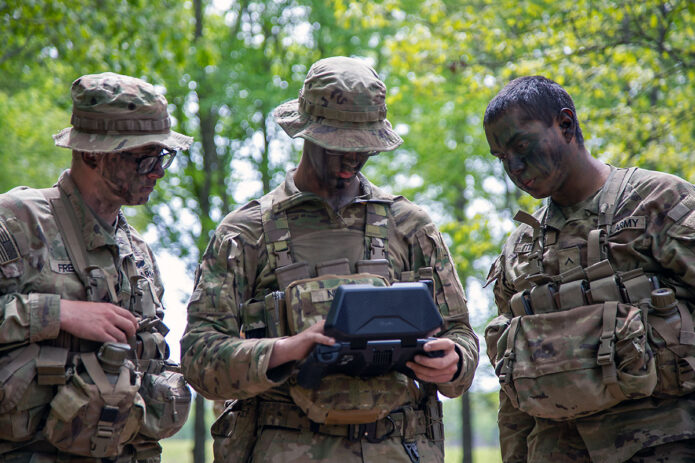 Fort Campbell, KY – Soldiers assigned to 2nd Brigade Combat Team (Strike), 101st Airborne Division (Air Assault) took part in a 21-day, division-level field training exercise, Operation Lethal Eagle 24.1 (OLE 24.1), at Fort Campbell, KY, from April 11th through April 30th, 2024.
Fort Campbell, KY – Soldiers assigned to 2nd Brigade Combat Team (Strike), 101st Airborne Division (Air Assault) took part in a 21-day, division-level field training exercise, Operation Lethal Eagle 24.1 (OLE 24.1), at Fort Campbell, KY, from April 11th through April 30th, 2024.
During the exercise, Strike tested and fielded a prototype for the Army’s new Mobile Brigade Combat Team, an organizational structure being implemented as part of the Army’s Transformation in Contact.
“Transformation in Contact is a series of fieldings and learning events that will inform the Army’s broader campaign of continuous transformation,” said Lt. Col. David Chichetti, assistant chief of staff G3, 101st Airborne Division (Air Assault). “For the 101st, what this looks like is fielding of the next generation squad weapon, the integrated tactical network, the infantry squad vehicle and a series of UAS platforms.”
Transformation in Contact is the most significant organizational transformation that the Army has undertaken since the end of the Cold War. The threat-driven campaign will ensure that the Army’s warfighting capabilities are the most mobile, lethal and technologically advanced on the twenty-first century battlefield.
“The twenty-first century battlefield is sensor-rich – it’s more lethal, and the technology is way more proliferated than it has been in the past,” said Chichetti. “The Army needs to transform now, not tomorrow, now, in order to stay ahead of our enemies.”

One way the 101st Airborne is staying ahead of their adversaries is through the integration of infantry reconnaissance, electronic warfare and unmanned aerial surveillance (UAS) assets in the newly formed Multi Functional Reconnaissance Company (MFRC).
“The Multi Functional Reconnaissance Company is a result of the Transformation in Contact, and we have been tasked with being painfully light and disproportionately lethal in order to sense, kill and protect on behalf of the brigade,” said Cpt. Charles O’hagan, commander of MFRC (Chaos), 2nd Brigade Combat Team (Bastogne), 101st Airborne Division (Air Assault). “Ultimately answering priority intelligence requirements for the brigade commander, delivering timely and accurate fires and prepping objectives for the infantry battalions.”
During OLE 24.1, Strike conducted a Large-Scale, Long-Range Air Assault Joint Forcible Entry (L2A2JFE) into the Fort Campbell training area. Prior to the L2A2JFE, Chaos infiltrated the training area, which was occupied by oppositional forces from 1st Brigade Combat Team (Bastogne), 101st Airborne Division (Air Assault). Chaos secured landing zones for Strike and conducted reconnaissance on multiple objectives. The training event culminated in an assault on Objective Titan, an urban operations training site occupied by Bastogne soldiers. Chaos spent three days conducting reconnaissance on the objective, providing essential intelligence for the eventual capture of the village by infantry battalions from Strike.
OLE 24.1 was Chaos’ first opportunity to field test their capabilities. Moving forward, they will continue to adapt and improve in preparation for future fights.

“As we overcome challenges of forming a new unit, the Multi Functional Reconnaissance Company will ultimately be prepared to counter near-peer adversaries,” said O’hagan. “And enable infantry battalions to seize objectives with minimal casualties and overwhelm the enemy commander.”
OLE 24.1 is one of many milestones in the continuous transformation of the 101st Airborne. As the world’s only Air Assault Division, the 101st has been tasked with the continuous evolution of vertical envelopment. Since their activation on August 16th, 1942, the 101st Airborne has been at the forefront of the this transformation, from the largest Airborne operation in history at Market Garden, to the development of Air Mobile and Air Assault tactics during the Vietnam War and Cold War, to the two largest Air Assault Operations in history during Desert Storm and Operation Iraqi Freedom, the 101st has led the way in changing how wars are fought from the sky and on land. Now, the Screaming Eagles have taken on the daunting task of becoming the L2A2JFE division of the Army of 2030.
“The Large-Scale Long-Range Air Assault brings the combatant commander a unique capability for Joint Forcible Entry,” said Chichetti. “In particular, we can air assault an entire brigade combat team worth of combat power over one period of darkness – over 500 nautical miles at a time and place of our choosing.”

The next Transformation in Contact milestone for Strike will be a rotation at the Joint Regional Training Center (JRTC) at Fort Johnson, Louisiana in August 2024. In 2025, the two other brigades from the 101st, Bastogne and 3rd Brigade Combat Team (Rakkasans), will begin their transformation process. Changes happening at the 101st now are expected to be implemented in divisions across the Army in the near future.
As technology advances and the global stage continues to change, the Screaming Eagles find themselves in familiar territory, on the front line of innovation, as they prepare for their next rendezvous with destiny.
“The 101st Airborne Division is the Army and the world’s only Air Assault Division. When you want it done, call the 101,” said Chichetti. “They know we can handle the toughest missions in the toughest conditions, so they asked us, and we are leading the way for the United States Army.”


